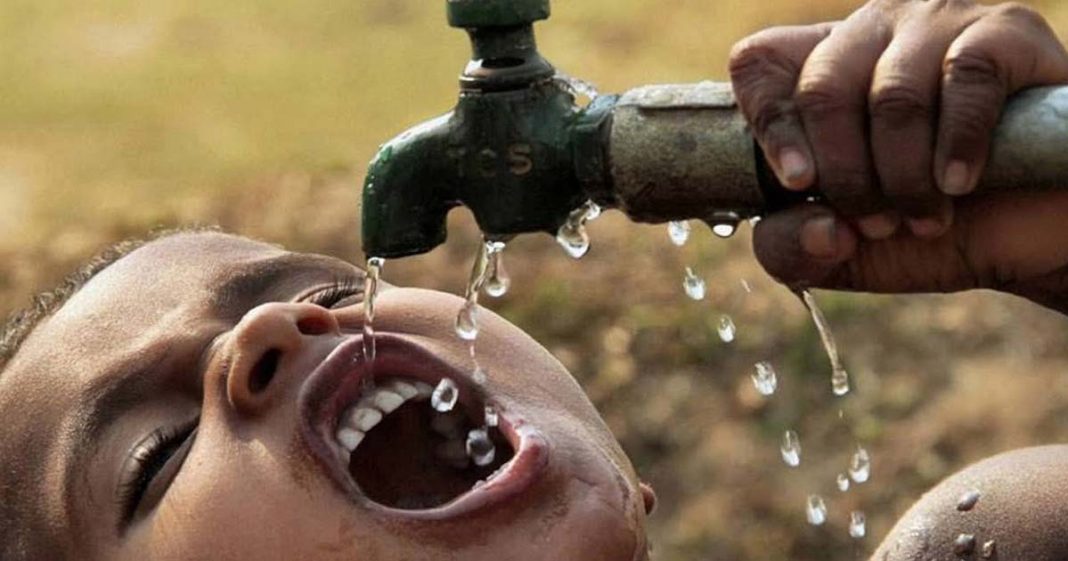The recent United Nation Development Program (UNDP) and Pakistan Council of Research in Water Resources (CRWR) reports have rung a bell of severe water shortage for the dwellers of Pakistan by 2025.
The UN report also highlights that the most immediate threats would be water unavailability to the masses and Neil Buhne, UN Humanitarian Coordinator, Pakistan said, “No person in Pakistan, whether from the north with its more than 5,000 glaciers, or from the south with its ‘hyper deserts’, will be immune to this.”
Read more: Water crisis in Pakistan: SC seeks investment proposals from SBP for dam construction
Pakistan, along with other non-traditional threats, is confronting a threat of severe water shortage in the coming decades. The country is already in the catalog of those nations which are tasting a calamitous shift in its climate.
In a situation like this, the matter of water crisis seems to further worsen in the future of the country. However, this crucial plight has not yet drawn the courtesy of the responsible authorities of the state including parliamentarians and bureaucrats.
Read more: Why Pakistan’s feudal class is not worried about the water crisis?
The disastrous climate change has already marked a drastic increase in the mercury of the globe and is mounting on with each passing year.
In a situation like this, where the aftermath of this catastrophic phenomenon – global warming – has escalated the probability of expected droughts and has left the ‘responsible and aware world’ sleepless, unfortunately, our government is deaf to the sound of this alarming situation.
Read more: Pakistan’s water crisis: expensive and deadly
And if the situation goes on at this pace, the economy of the state, which is considered as a backbone for the sustainment of a country, will collapse in the near years ahead.
India’s water antagonism
The agriculture sector, the major contributor to the economy of the state which accounts for 24% of GDP and has a lion share of 70% in the country’s total exports, relies on the water supply.
And in the contemporary pace of time, where on one side the arch-rival neighbor – India, in its cold start doctrine, has waged lethal water terrorism against us. A crucial change in the country’s current water management policy is the need of the hour.
Read more: Can India and Pakistan cooperate on water?
Compared to India, which holds a water capacity of 265 MAF with 4700+ dams, the current water storage capacity of Pakistan stands at 14 MAF with only 68 dams. These statistics verily show the level of earnestness of the state’s policies to counter the grave problem of water shortage.
On one side, India in its ‘water terrorism’, is not only violating the Indus Water Treaty by constructing more dams on the western rivers, but it is also trying to shape our arable lands into barren deserts by blocking water of the western rivers.
Read more: Pakistan Warns India Over Talk Of Scrapping The Indus Water Treaty
Whether it is the construction of Kashanganga Dam or Baglihar Dam, India has violated the remarkable Indus Water Treaty. However, these nefarious designs of the neighboring country are not solely responsible for this disastrous issue.
Water resources of Pakistan, if accurately managed, are enough to bring out the country from the alarming somber problem. However, due to prioritized national interests and loopholes in the political architecture coupled with negligence from lawmakers, shadows of the water crisis gradually engulf our future.
Read more: Water Wars – A battle for Pakistan
Ways to mitigate water crisis
To properly deal with this gruesome matter of time, a shift in the current priorities of the state is inevitable. Proper water management policies, therefore, need to be among top priorities as it is a matter of life and death of the nation.
The vision 2025, proposed in Musharraf’s regime 2000, has to be implemented in its ‘letter and spirit’ to rein the alarming bell of water crises. The political grievances on the construction of the Kalabagh dam have to be resolved.
Read more: Pakistan’s Kalabagh Dam and a series of unfortunate events
The ongoing giant economic project of CPEC, if properly cashed, can help to boost the country’s water shortage capacity by blessing the motherland with projects like Neelum Jehlum hydro project and much more.
Besides this, the imposed ‘water terrorism’ from India has to be addressed at all international forums to curb the nefarious outcomes. The water shortage issue must not be taken lightly as Pakistan is on its way to becoming the most water-stressed country in the region, by the year 2040, according to the UNDP report.
Read more: Pakistan appeals to World Bank over Indian violation of Indus Water Treaty
Pakistan, being a third-world country, is facing numerous threats ranging from proxy wars to food shortage to drug abuse to the water crisis. Although each threat is eroding the country’s peace and economy, the water crisis seems to be the most somber one.
If this grisly matter is not resolved instantaneously, the future of the dwellers of the country will not be different than that of the ‘Rango’ – a leading role in the 2009 animated movie ‘Rango’ – searching for a single drop of water to quench its thirst.
Read more: World’s water woes and how climate change caused this crisis
The author is a Patrol Officer in National Highways and Motorway Police, NHMP, and is an independent researcher. The views expressed in the article are the author’s own and do not necessarily reflect the editorial policy of Global Village Space.














